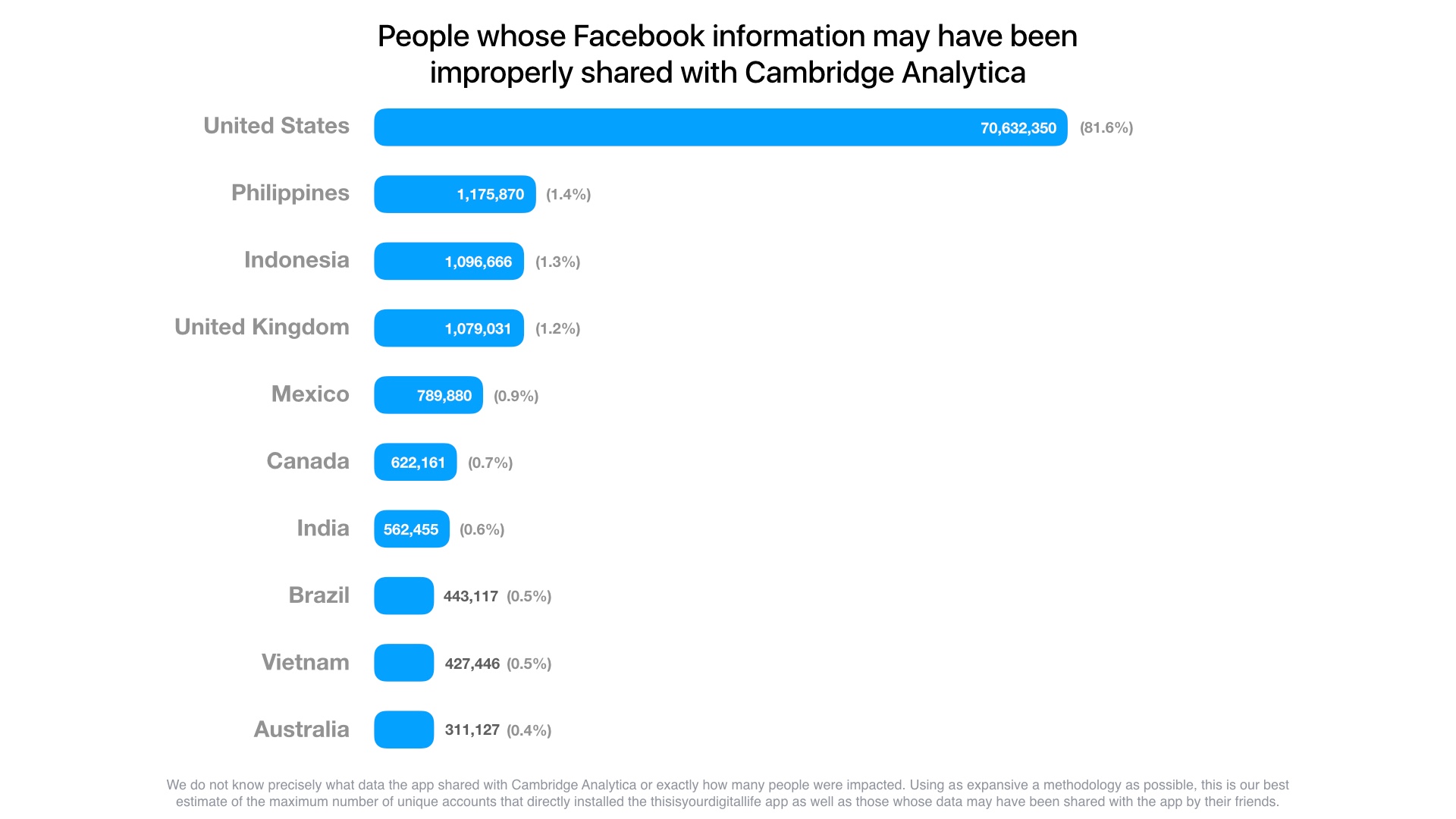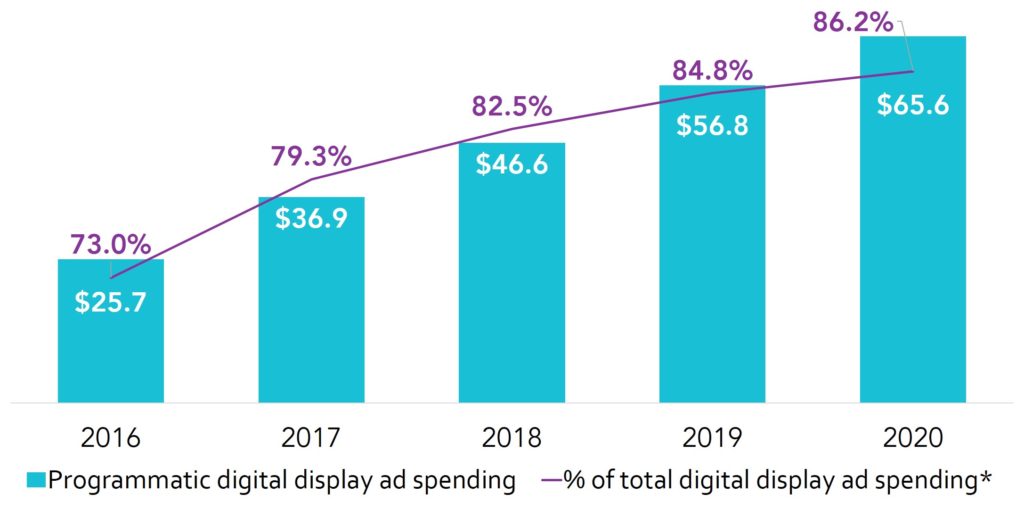[APRIL 2018] TL;DR Roundup – Obligatory Facebook Update, YouTube TrueView Ads and Programmatic Ad Spending Updates
Welcome to the TL;DR Roundup, Mindstream Media Group’s recap of the biggest stories in digital media, marketing and advertising. We know there’s too much going on to read everything, so we break down the most important stories for you.
Need help with your marketing/advertising efforts? Have any questions about this week’s news? Think we missed something? Send us a message to let us know.
Obligatory update on the Facebook Cambridge Analytica story
If you’re like me, you’re probably overwhelmed with the amount of news surrounding Facebook and the Cambridge Analytica data leak. It’s understandable. It’s been a whirlwind of activity since the story broke. To add to the frenzy, Facebook has been updating their data and privacy practices at a dizzying rate over the past couple of weeks.
Related – Everything You Need to Know About the Facebook Cambridge Analytica Data Scandal
Luckily, Facebook was nice enough to sum up the changes they consider most important (or, at the very least, the ones they found easiest to explain). In a blog post on Wednesday, Facebook’s Chief Technology Officer Mike Schroepfer outlined the “nine most important changes” Facebook is making.
To get all the Facebook data news out of the way, here’s a brief rundown of the moves:
- Events API – starting Wednesday, “apps using the API will no longer be able to access the guest list or posts on the event wall.”
- Groups API – “apps will no longer be able to access the member list of a group. And we’re also removing personal information, such as names and profile photos, attached to posts or comments that approved apps can access.”
- Pages API – “all future access to the Pages API will need to be approved by Facebook.”
- Facebook Login – starting Wednesday, “Facebook will need to approve all apps that request access to information such as check-ins, likes, photos, posts, videos, events and groups.”
- Instagram Platform API – effective Wednesday, the recently announced deprecation of the Instagram Platform API.
- Search and Account Recovery – disabled the feature that allowed “people could enter another person’s phone number or email address into Facebook search to help find them.”
- Call and Text History – “We’ve reviewed this feature to confirm that Facebook does not collect the content of messages — and will delete all logs older than one year.”
- Data Providers and Partner Categories – this feature is now shut down. (For more on that, check out our blog post from last week.)
- App Controls – starting April 9, Facebook will display a link at the top of the News Feed to show users what apps they use and what information they’ve shared with those apps.
Talk about burying the lede
After all the uplifting stuff about privacy updates, Schroepfer dropped the bomb:
In total, we believe the Facebook information of up to 87 million people — mostly in the U.S. — may have been improperly shared with Cambridge Analytica.
Original reports had the number at about 50 million, meaning those reports undershot the total number of impacted users by more than the entire population of Canada. Pretty big difference, eh?

Image source: Facebook
YouTube announces TrueView for reach
YouTube opened the week by announcing a new ad format on Monday – TrueView for Reach. According to Google’s Inside Ads blog:
TrueView for reach brings our popular in-stream format built on user choice together with the simplicity of CPM (cost per thousand impressions) buying. Optimized for efficient reach, this format can help you to raise awareness among a broad set of customers — and do so within our 95 percent viewable and 95 percent audible environment.
Here’s how a report from AdAge summed up the new ad format for advertisers:
YouTube’s new ad product will still cost advertisers, even if the viewer presses skip. Kind of like TV.
The video service, owned by Google, has a new skippable ad offering that prioritizes reaching large audiences over completed views of commercials. The new ad product, a variation of YouTube’s five-second skippable ads, is designed for brands that are comfortable with the TV-way of buying.
Here’s how it works: The advertiser runs its video ad, typically 10- or 15-seconds long if made for mobile. The advertiser pays for each impression on a cost per 1,000 impression basis—and impressions count after two seconds, the industry standard, even if the user winds up skipping at the five-second mark, an option YouTube offers…
“YouTube is trying to help advertisers buy media inventory in a way they understand,” says Jared Belsky, president of 360i. “But the dream of digital is to only pay for things that are completed and watched and real. This looks like walking back on that a little bit.”
Voice-activated savings
Staying with news from Google, the company recently began rolling out the first voice-activated coupon for their digital assistant. Users can activate a $15 coupon from Target by saying “spring into Target” on their Google Assistant via their Home smart speaker or through the smartphone app.
According to Adweek:
The promotion was slated to run through April 21, but no new codes were being issued as of April 3. It was unclear why the promotion ended early. In addition, the promo was limited to one offer per account, and the $15 had to be used on a single order.
Programmatic ad spending continues to rise
eMarketer released an updated estimate for programmatic ad spending and the numbers continue to climb. According to the report (subscription required), U.S. advertisers will invest more than $46 billion in programmatic advertising this year.
U.S. programmatic digital display ad spending (in billions)

A good chunk of that spending will go into programmatic direct advertising which includes ad buys on Facebook. The report did not mention if the estimates factor in any potential fallout from the Cambridge Analytica data leak.
Here are some of the biggest takeaways from the report:
- Nearly $19 billion in additional ad spending will enter the programmatic display space between 2018 and 2020. And the majority will go to private setups, such as private marketplaces (PMPs) and programmatic direct transactions, as buyer wariness toward the open markets’ transparency and quality issues persists.
- By 2020, almost 90 percent of all mobile display ads will transact programmatically, buoyed by continued investment in social platforms, and ongoing efforts to bring programmatic and its audience-buying capabilities to the in-app space.
- Programmatic channels will claim nearly three-quarters of digital video ad dollars in 2018, a portion that will rise to almost 80 percent by 2020. As added investment in over-the-top (OTT) and connected TV (CTV) inventory grows, momentum around programmatic video will only rise.
Video advertising for any screen
Speaking of video ad dollars, cable operator Altice USA launched an ad-tech division on Thursday called A4 with the goal of providing advertisers highly-targeted audiences across digital and TV screens.
Ad Exchanger interviewed A4’s President, Paul Haddad, about the launch:
Advertisers and agencies can use A4’s platform to identify their audience across screens and local and national TV inventory. They can then create a media plan, execute the buy and measure cross-screen reach, frequency and attribution within minutes, Haddad said…
Through A4, advertisers can access data that is stitched together to reach a footprint of more than 90 million households, 85 percent of broadband subscribers and 1 billion devices in the U.S., Haddad said. That data includes de-identified Altice USA subscriber data and viewership and device-level data from MVPDs (multichannel video programming distributors) across the country, which A4 receives in exchange for providing MVPDs with its platform.
It’s about time someone put a stop to this
On to the realm of traditional TV advertising. The PGA’s 2018 Masters Tournament teed off this week at Augusta National. If you tune in, you’re sure to catch some familiar sights and sounds – Tiger is back and looking strong, Jim Nantz will still be there to greet viewers with his trademark “hello friends” and plenty of hecklers will line the fairways shouting lame catchphrases after every shot.
A catchphrase you’re unlikely to hear (more than once from any one person anyway) is the medieval-themed rallying cry “dilly dilly.” According to a report from Adweek, the phrase made popular by a recent series of Bud Light commercials is forbidden at the tourney and any fan caught yelling it will be banished from the land (a.k.a., the golf course) henceforth and thrown in the pit of misery (a.ka., the parking lot).
The reported ban prompted the following decree from Bud Light’s fictional King John Barley IV via twitter:
Our King weighs in on the Dilly Dilly ban. pic.twitter.com/rVxrD5dsNf
— Bud Light (@budlight) April 3, 2018
Live sports streaming blues
Speaking of sports, our final story today is about Major League Baseball who broadcast its first digital-only game this week. Wednesday’s matchup between the New York Mets and Philadelphia Phillies was shown exclusively on Facebook – the first of 25 weekly games that will air on the social network this year.
It didn’t go great. Here’s how a report from the New York Times described the broadcast:
Several viewers complained that the onscreen scoreboard and statistics banner blocked too much of the screen, as did the comments bar on the side. And in the fifth inning, as the broadcast showed a montage of the Mets’ oft-injured captain David Wright, the feed froze.
Much like any new way of viewing sports, this debut broadcast appealed to some fans and estranged others.
“I’m standing in my kitchen watching on my cellphone because it wasn’t working well on my TV,” Mike Schulman, a high school teacher on Long Island, said by telephone during the ninth inning of the Mets’ 4-2 victory. “It worked but it was lagging. The image got really pixelated at points. It worked fine on my cellphone and laptop.”
Subscribe to our blog to get digital marketing updates delivered straight to your inbox.
More from Mindstream Media Group

Meet the Mindstreamer – Chandler Swanner
Chandler Swanner’s interest in advertising dates back to her childhood. Her mother (and role model in life) was a Media […]

Third-Party Cookie Phase-Out: What Marketers Need to Know
Cookies are an essential part of internet usage, allowing websites to remember you and provide a more personalized experience. This […]

Meet the Mindstreamer – Kaya Bucarile
She plans and oversees media strategy for agency clients, working closely with project and platform managers to ensure that we […]
